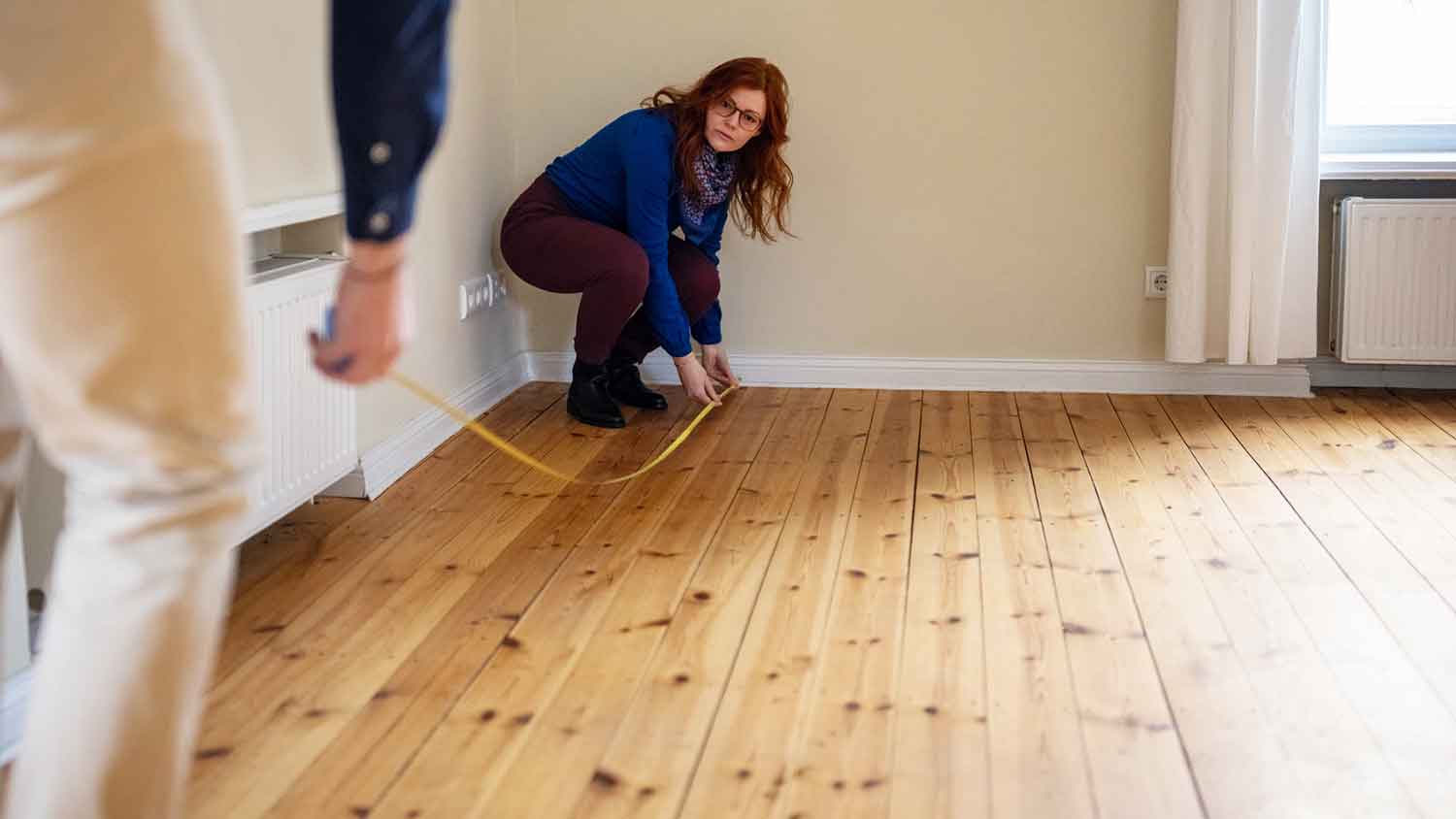
Damaged tiles should be fixed right away. In this guide, find out all of the different factors that affect your tile repair cost.


Calculate the amount of tile you need by dividing your project area by the tile size.
Always add 10% extra to cover waste, cuts, and future repairs.
Include grout lines when measuring tile dimensions.
Hiring a tile professional helps prevent installation mistakes.
Picking out new tiles can be tons of fun, but one of the many questions you’ll have to ask is: How much tile do I need? The answer depends on the square footage of your space and the size of the tiles. This tile calculator will help you determine the correct number of tiles to order based on the following factors.
You’ll need to consider a few factors when deciding how much tile to order, including the surface area of the project and the size of the tiles.
Before we get into formulas, here’s a quick overview of how many 4”x 4" tiles you might need for common project sizes. These numbers assume you’re using 1/8-inch grout lines (we’ll explain more about that below) and include a 10% overage to account for cutting, breakage, and future repairs.
| Project Size (in Square Feet) | Number of Tiles Required |
|---|---|
| 25 | 234 |
| 50 | 467 |
| 75 | 699 |
| 100 | 932 |
| 150 | 1,397 |
| 200 | 1,863 |
| 250 | 2,328 |
Before you can calculate how many tiles to buy, you’ll need to know the size of your project and the dimensions of your tiles. Then, you can use the following formula to determine the correct number of tiles:
Number of Tiles Needed = (Project Size (in Square Inches) / Tile Size (in Square Inches)) x 1.1

To calculate the correct amount of tile for your project, you’ll have to take a few measurements. Here’s how to do it.
There are different ways to measure square footage for tile installations, depending on the layout of your space.
For a square or rectangular area, you’ll simply multiply the length and width to get its square footage.
If you’re measuring a circular area, measure the diameter of the circle and divide it in half. This will give you the radius of the circle, which you’ll then multiply by itself (to square it). Finally, multiply the squared radius by 3.14 to get the square footage of the tiled area.
For a triangular area, measure the base and divide it in half. Then, measure the height by extending the line from the base to the furthest point of the triangle. Multiply those two numbers to find the space’s square footage.
Tiles come in various sizes, ranging from a quarter-inch to several feet in diameter. When shopping for tile, be sure to note the dimensions, since they’ll directly impact how many tiles you need to buy.
After you’ve chosen a tile size, add the size of the grout lines to the length and width of each tile. For example, if you’re using 4 x 4-inch tiles and 1/8-inch grout lines, the total size of each tile would be 4 1/8 x 4 1/8 inches. Then, multiply the length and width to get each tile’s area (in this example, it would be 17.02 inches).
Whether you’re retiling a shower, installing a new tile floor, or adding a backsplash, hiring a tile contractor is your best bet. Here’s why:
They have the expertise, skills, and tools to perform the job safely and successfully.
They work faster than the average DIYer.
They know how to minimize the risk of future problems with your tile, such as leaks and mold.
They can help you choose and order the right tiles and materials for your project.
From average costs to expert advice, get all the answers you need to get your job done.

Damaged tiles should be fixed right away. In this guide, find out all of the different factors that affect your tile repair cost.

Discover the cost to regrout shower, including average prices, key cost factors, and tips to help you budget for a fresh, watertight shower.

You're planning a bathroom remodel, but how much will it cost to retile your bathroom? Read this guide to find out.

Learn about the seven types of grout so that you can choose the right one when installing tiles on any wall or floor in your home.

Discover the differences between epoxy grout versus cement grout and choose the best option for your tiling project. Learn about pros, cons, and ideal uses.

If you’re starting a bathroom refresh, you may wonder if you can paint shower tile. Find out everything you need to know about shower tile paint in this guide.